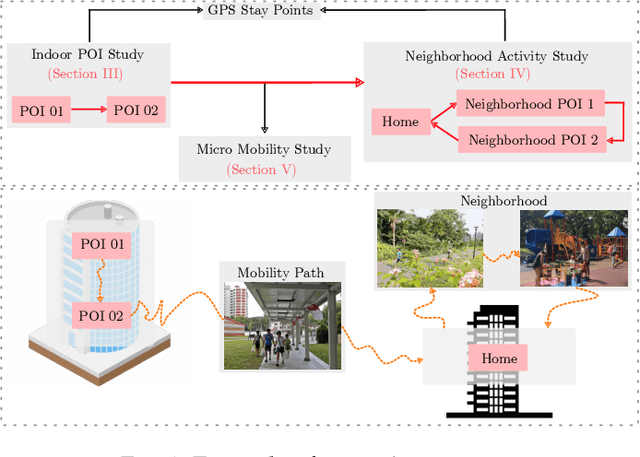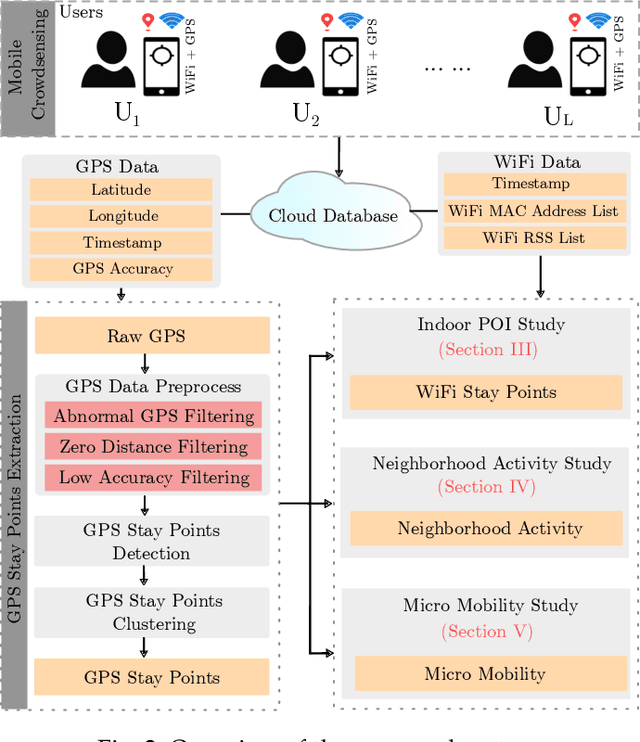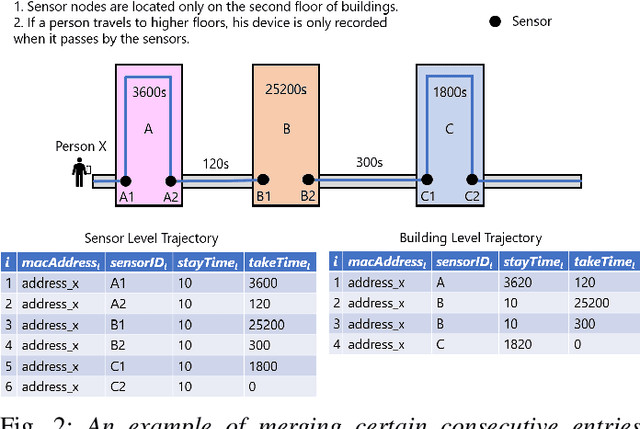Keng Hua Chong
Clustering and Analysis of GPS Trajectory Data using Distance-based Features
Dec 01, 2022Abstract:The proliferation of smartphones has accelerated mobility studies by largely increasing the type and volume of mobility data available. One such source of mobility data is from GPS technology, which is becoming increasingly common and helps the research community understand mobility patterns of people. However, there lacks a standardized framework for studying the different mobility patterns created by the non-Work, non-Home locations of Working and Nonworking users on Workdays and Offdays using machine learning methods. We propose a new mobility metric, Daily Characteristic Distance, and use it to generate features for each user together with Origin-Destination matrix features. We then use those features with an unsupervised machine learning method, $k$-means clustering, and obtain three clusters of users for each type of day (Workday and Offday). Finally, we propose two new metrics for the analysis of the clustering results, namely User Commonality and Average Frequency. By using the proposed metrics, interesting user behaviors can be discerned and it helps us to better understand the mobility patterns of the users.
WiFi Fingerprint Clustering for Urban Mobility Analysis
May 04, 2021



Abstract:In this paper, we present an unsupervised learning approach to identify the user points of interest (POI) by exploiting WiFi measurements from smartphone application data. Due to the lack of GPS positioning accuracy in indoor, sheltered, and high rise building environments, we rely on widely available WiFi access points (AP) in contemporary urban areas to accurately identify POI and mobility patterns, by comparing the similarity in the WiFi measurements. We propose a system architecture to scan the surrounding WiFi AP, and perform unsupervised learning to demonstrate that it is possible to identify three major insights, namely the indoor POI within a building, neighbourhood activity, and micro-mobility of the users. Our results show that it is possible to identify the aforementioned insights, with the fusion of WiFi and GPS, which are not possible to identify by only using GPS.
Multiple-Perspective Clustering of Passive Wi-Fi Sensing Trajectory Data
Dec 22, 2020



Abstract:Information about the spatiotemporal flow of humans within an urban context has a wide plethora of applications. Currently, although there are many different approaches to collect such data, there lacks a standardized framework to analyze it. The focus of this paper is on the analysis of the data collected through passive Wi-Fi sensing, as such passively collected data can have a wide coverage at low cost. We propose a systematic approach by using unsupervised machine learning methods, namely k-means clustering and hierarchical agglomerative clustering (HAC) to analyze data collected through such a passive Wi-Fi sniffing method. We examine three aspects of clustering of the data, namely by time, by person, and by location, and we present the results obtained by applying our proposed approach on a real-world dataset collected over five months.
 Add to Chrome
Add to Chrome Add to Firefox
Add to Firefox Add to Edge
Add to Edge